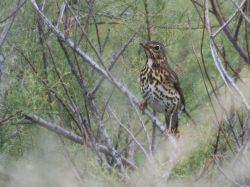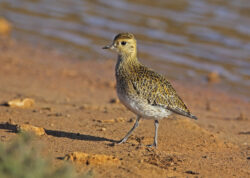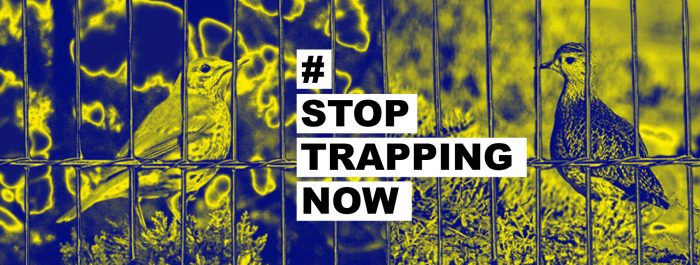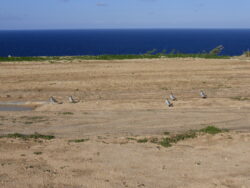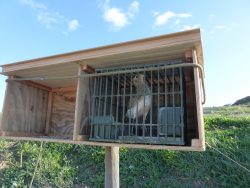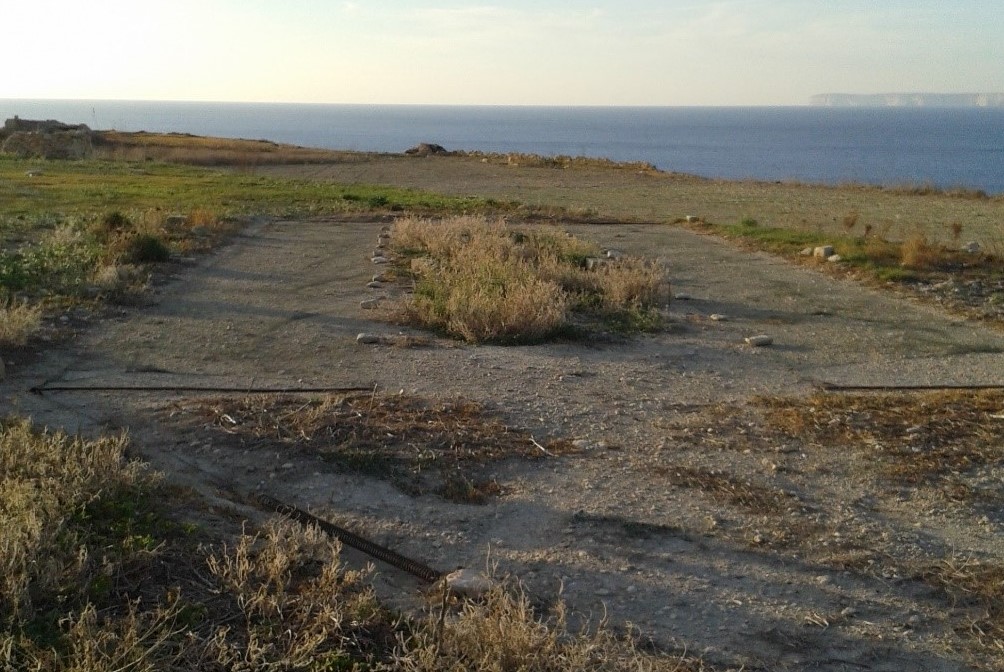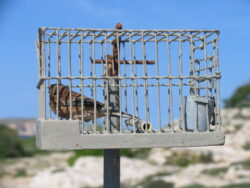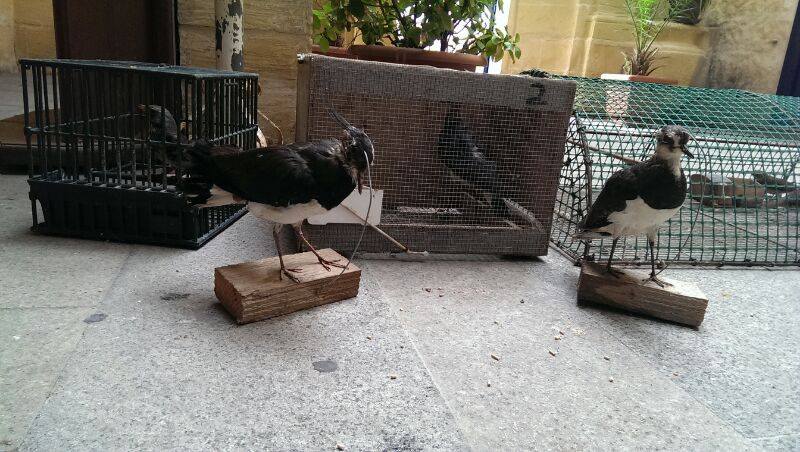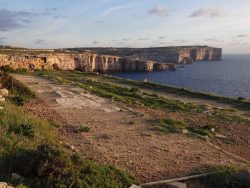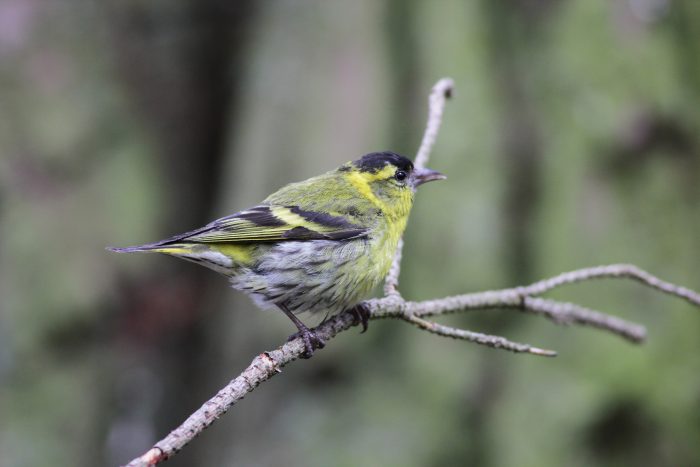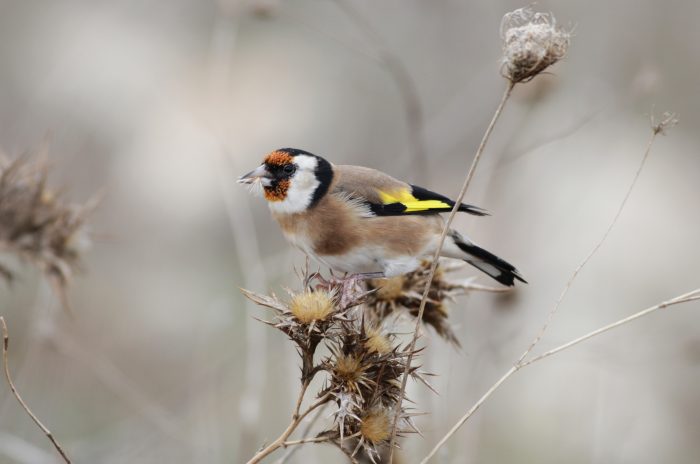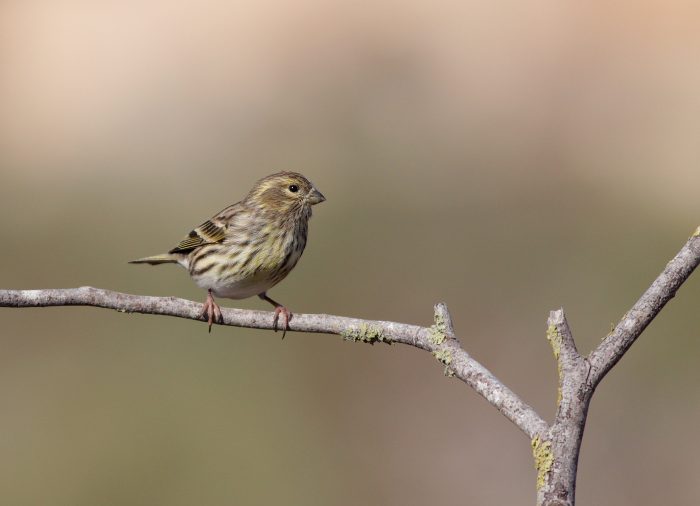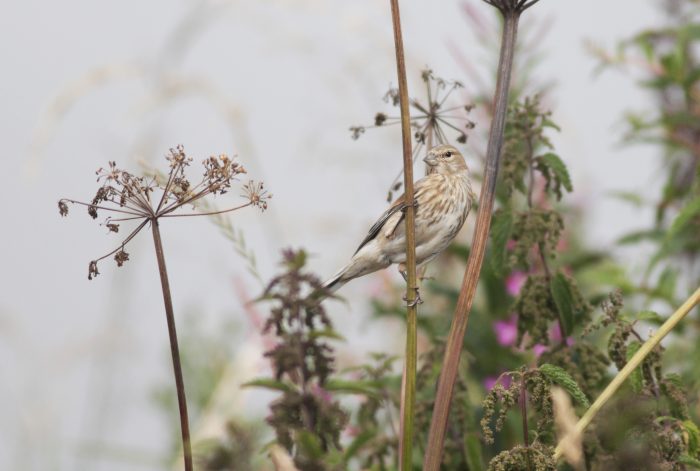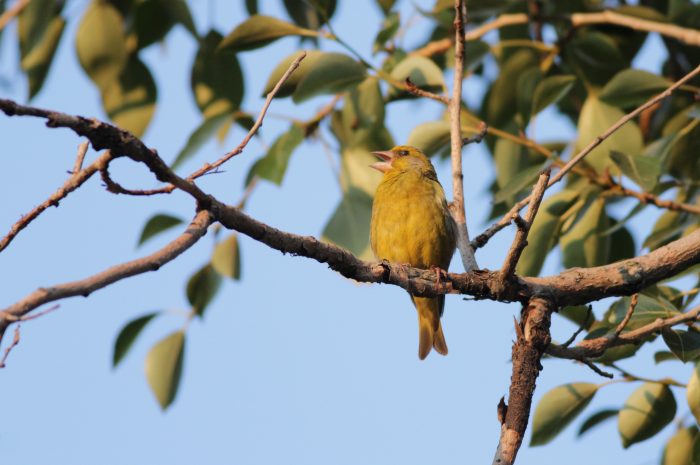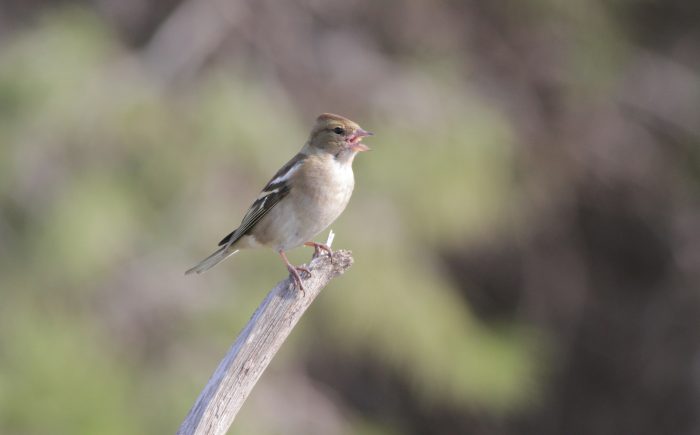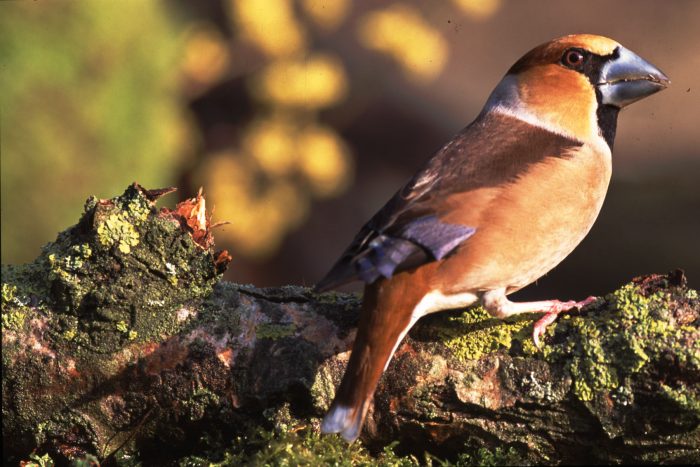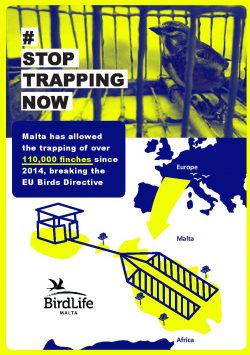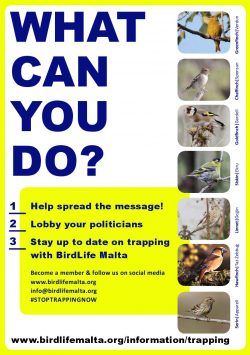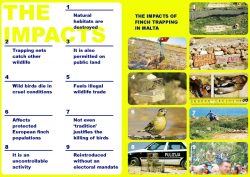Trapping of wild birds
Despite trapping being non-conformant to the European Birds Directive, as it is considered an unsustainable method of killing wild birds, Malta still allows a trapping season each and every autumn, by means of a derogation.
Under the autumn 2025 trapping season, trapping is permitted from the 20th of October 2025 until the 10th of January 2025, on two species: Song Thrush (20th October–31st December) and Golden Plover (1st November–10th January).
Trapping is permitted from two hours before sunrise to two hours after sunset, every day of the season. Trapping at night is prohibited. The Wild Birds Regulation Unit (WBRU) issued the list of 1,641 registered sites with clap-nets for the 2025 trapping season across Malta and Gozo. The main rationale why trappers are allowed to catch such birds, is to be able to use them as live decoys for hunting or further trapping.
Infringement proceedings
Following the autumn 2020 trapping season, on 3rd December 2020 the European Commission initiated infringement proceedings against Malta in regard of the derogation allowing trapping of Song Thrush and Golden Plover. According to the Commission, this derogation falls short systematically of the requirements set out in the legislation, related in particular to poor supervision of the conditions set out in the derogation, which results in other species than those targeted being affected. Relying on insufficient or inaccurate information about the populations of wild birds and the available alternatives, Malta also failed to fulfil the basic conditions for granting such derogation.
Trapping for these two species was already the subject of earlier infringement proceedings initiated by the European Commission in 2011. The two warnings already given to the Maltese Government concerned the manner past trapping seasons were opened, and not adequately enforced. This means that should the trapping season be considered as being unjustified, inadequately enforced or in breach of the principles of the Birds’ Directive, the European Commission may decide to take Malta once again to the European Court of Justice.
This would not be the first case against Malta on trapping, following June 2018’s landmark European Court of Justice (ECJ) judgement which found Malta guilty of infringing the European Birds Directive when it allowed finch trapping to reopen between 2014 and 2017. The ECJ finch trapping verdict sent an indirect message to the Government to also halt the trapping season for Golden Plover and Song Thrush since the methods applied in this case are the same as those applied to capture finches.
Finch trapping
In spite of the 2018 ECJ finch trapping judgement, in 2020 and yet again in 2021, 2022, 2023, 2024 and 2025 the Government also announced a trapping season for finches under the guise of a research project. The reopening of the seasons led to the European Commission (EC) initiating fresh Infringement Proceedings against Malta on finch trapping in December 2020. The case was concluded on the 19th September 2024 with a sentence which found Malta guilty of having breached the Birds Directive once again.
Despite the damning sentence, the Maltese government has still re-opened a season for finches, claiming that all it needed to do was justify the derogation better. As a result, a trapping season has once more been permitted with the excuse of a scientific study. Trappers this year were once again permitted to trap Greenfinch, Goldfinch, Hawfinch, Chaffinch, Serin, Linnet and Siskin between the 20th of October and the 20th of December 2025, both days included. Trappers were expected to release the birds soon after they catch them, after recording details of birds carrying a ring and submitting the information to WBRU.
For the Framework Law allowing the derogation to carry out scientific research on seven species of wild finch, click here. For the Declaration on the derogation (Legal Notice 253 of 2025) click here. A total of 2,932 trapping sites were authorised to trap under the finch ‘research’ derogation in 2025. The locations of permitted trapping sites for 2025 can be found here. You can also visit the Finch trapping tab below for more information.
For a map of all the 4,573 registered trapping sites (1,641 Golden Plover & Song Thrush sites, and 2,932 finch ‘research’ trapping sites) click on the button below.
- What is permitted?
- Report
- #NoMoreCallers
- Impacts
- Trapping methods
- Finch trapping
- ECJ 2018 judgement
- #STOP TRAPPING NOW
What is permitted?
The trapping season is now open. With hundreds of trapping sites active between October 2025 and January 2026, it is likely to encounter trapping activity in the countryside across Malta and Gozo.
Which birds could be trapped?
– Song Thrush (Malvizz)
– Golden Plover (Pluviera)
National quotas are set at 5,000 Song Thrush and 700 Golden Plover. There is no individual bag limit for trapping of both species. All other birds could not be trapped.
Where is trapping allowed?
Nets for trapping can only be used at sites authorized and licensed by the Wild Birds Regulation Unit (WBRU).
A total of 1,641 trapping sites are authorised to trap. The locations of permitted trapping sites can be found here. Trapping should not be authorized on protected habitats, but unfortunately may be authorized on public land or land belonging to third parties, as long as this has been registered with WBRU.
When is trapping allowed?
20th October – 31st October: only Song Thrush could be trapped
1st November – 31st December: both Song Thrush and Golden Plover could be trapped
1st January – 10th January: only Golden Plover could be trapped
Trapping is permitted during all the day without timing or weekend/public holiday restrictions. During the night, trappers were obliged to dismantle their nets or cover them. Nets could not be left unattended due to their possibility of catching other birds and fauna.
What could constitute illegal trapping?
Unauthorised use of land
If a trapping site is located in an area not authorized by WBRU, then the trapping site is operating illegally irrespective of what species it may be targeting.
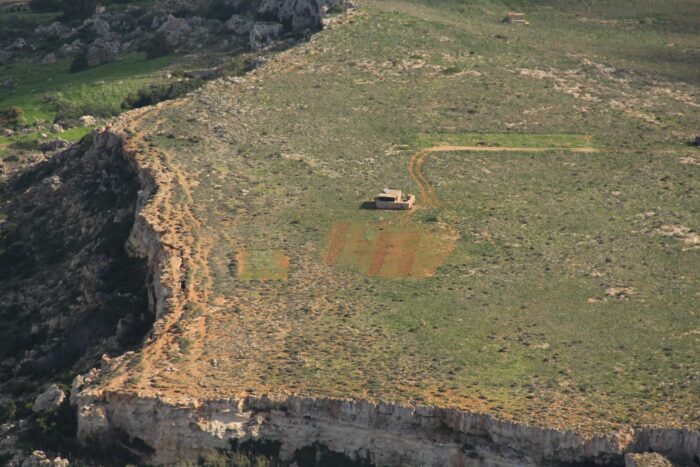
Trapping sites that may not be authorised include those on garrigue habitats in coastal Natura 2000 sites
Finch trapping
The practice of finch trapping is still a widespread issue with the majority of trapping sites still targeting these species despite the practice being illegal since June 2018. Finches are normally placed in tiny cages along the borders or within areas where trapping clap nets are placed, and can include any of these species: Linnet, Goldfinch, Greenfinch, Siskin, Hawfinch, Chaffinch and Serin. At times finches may also be tethered and swiveled up and down on a trapping site to attract wild finches.
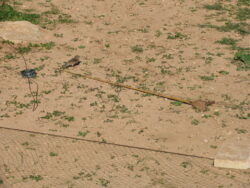
A tethered finch tied to a stick is often also used at trapping sites, being swung up and down to attract wild finches
All such finches are roughly the size of a sparrow or a canary and therefore they are unmistakable to Song Thrush and Golden Plover which are much larger birds.
Wader trapping
Despite Golden Plover being effectively a wader bird, the sites equipped for Golden Plover trapping are at times equipped to target other birds which cannot be trapped. These include species like Northern Lapwing and Ruff which can be hunted but cannot be trapped. Seeing such birds in cages as live decoys or as fake decoys on a trapping sites, means that the trapper is targeting such species illegally.
Use of bird callers
The use of bird callers is at all times illegal. A bird caller can be distinguished from the call of caged birds by being often repetitive, loud and continuing on for hours, especially at night. Golden Plover callers often use a mix of calls similar to this:
To report illegal electronic callers, please fill in this form. We will treat personal details with confidentiality.
Report
How to report illegal trapping
Illegal trapping can constitute any of the following scenarios:
a) It is using a location not permitted by WBRU (check here for 2024 sites)
b) It is targeting finches or any other birds which are not Song Thrush and Golden Plover
c) It is using bird callers
d) It has been left unattended with nets still out able to catch fauna
In such cases, you can report the matter as follows:
1. Know your location adequately, ideally with a GPS coordinate you can refer to from your smart phone
2. Take photos and videos as necessary of what you think might be illegal – note that in the case of bird callers, audio is crucial
3. Do note what else can be helpful when giving details to police – a landmark, a description of a vehicle, the name of a road etc.,
4. Call police on 119, asking to get in touch with the Environmental Protection Unit (EPU) which is closest to your area. Do take note of who is the police officer you are talking to and do provide them with a contact number so they can reach you. Explain clearly what kind of illegal trapping you are witnessing (a-d above)
5. Contact us directly on 21347645 or 7925 5697 (outside office hours) so we may be able to guide you further on reporting the matter. You can also send us photos, videos, maps or location by email to [email protected].
Trapping is an unsustainable method of hunting which causes damage to wildlife and habitats. Your contribution to reporting the situation in the field will help us protects birds and wildlife. See next section on the impacts of trapping.
#NoMoreCallers
The use of electronic bird callers for hunting and/or trapping is at all times illegal. A bird caller can be distinguished from the call of caged birds by being often repetitive, loud and continuing on for hours, especially at night. In spite of the fact that these recordings are illegal and cannot be used for hunting and trapping of birds, we know that this abuse continues unabated across Malta and Gozo. It is also detrimental to all those who live by the countryside or in the outskirts of our villages.
Did you ever hear any of these recordings?
If you did, visit https://bit.ly/NoMoreCallers and fill in the details on the form. Your personal details will remain confidential.
The video above (ENG and MLT versions) was prepared to raise awareness and gather feedback about the rampant use of illegal electronic bird callers.
Impacts
Trappers prepare their trapping sites by removing vegetation using mechanical cutters, burning or toxic herbicides. In many cases soil, sand or gravel is then dumped on the land to create a level surface on which nets can be laid. This practice scars the land and in fact, trapping sites can easily be seen from the air or satellite images.
Many trapping sites are situated in some of the richest areas for biodiversity on the Maltese islands, including Natura 2000 sites. Many trapping sites are also illegally built in Special Areas of Conservation, where the act of destroying protected habitat is against international law. The destruction of habitat impacts on other species of flora and fauna, resulting in a loss of biodiversity, further impoverishing our countryside. Apart from loss of habitat, wildlife is also harmed by nets which are often left unattended on the ground overnight, out of season, or after being abandoned. This exposes animals and birds to the risk of getting entangled in the nets and suffering a slow death of starvation or exposure.
The damage trapping can cause to the environment is one of the reasons trapping is banned in EU member states under the Birds Directive.
Trapping methods
Trapping in Malta is mainly carried out using clap nets. This method uses two large nets which are placed parallel to each other on the ground and swing shut towards each other when activated. In preparation for the use of clap nets, trappers remove all vegetation in the trapping area and often dump soil or gravel to create a level surface where the nets can be spread. A number of live decoy birds are also placed around the trapping site – either kept in tiny cages or tied directly to the ground by a harness. This type of trapping site is the one most frequently encountered in the Maltese countryside and is also the only legal form of trapping. Golden Plover and Song Thrush are the only birds that can be caught using this method. Other illegal methods of trapping include:
Cage traps: Taking the form of a small cage unit to large aviary-like contraptions, the use of cage traps is illegal for any species. Cage traps are distinguished from aviaries or cages by having a space where a bird can enter and is either ensared inside, or literally trapped in without the possibility of exiting. Large cage traps may be encountered in the countryside particularly targeting Turtle Doves, however smaller sized cage traps can also be encountered targeting finches, or even robins. In all cases of cage traps, a live bird decoy of the species being targeted is used. 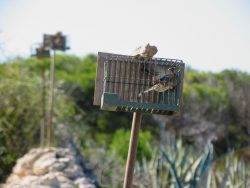
Mist nets: Mist nets are vertical nets suspended on poles which are placed close to vegetation and are used to catch birds which fly into them. The use of such nets is solely permitted for research purposes. Illegal use of mist nets has at times been used in Malta to particularly trap Song Thrush illegally. Their use is often accompanied with the use of live decoys and/or electronic callers.
Crop nets: Another type of net used is a horizontal net spread over a tall crop, such as corn, with three sides dangling to the ground and the fourth tied up like a curtain. This net is used to catch Common Quail, which seek cover in the crops after arriving in Malta at night – they are again attracted to the area by a large number of live decoys or electronic lures. In the morning the net is closed completely and a dog is pushed under the net to flush the trapped quails into a corner where they can be removed by the trapper. Any other form of catching wild birds, irrespective whether these can be hunted or not, is illegal.
Finch trapping
When Malta joined the EU in 2004, a ban on finch trapping was one of the conditions of the Accession Treaty. The government agreed to gradually phase out trapping for finches over a five year period. However, in 2014 the practice was reintroduced. The finches trapped include Greenfinch, Goldfinch, Hawfinch, Chaffinch, Serin, Linnet and Siskin. In September 2015, the European Commission announced that they will be taking Malta to the European Court of Justice (ECJ) for allowing finch trapping, against EU law. The court case was initiated in October 2015 and in July 2017, ECJ Advocate General Eleanor V. E. Sharpston delivered a scathing Opinion denouncing finch trapping in Malta and clearly declaring that Malta had no judicious cause to trap birds whilst questioning the level of enforcement and supervision.
Despite this, however, the Maltese Government in autumn 2017 decided once again to open the trapping season. This was the fourth finch trapping season to be opened (October 2014, October 2015, October 2016 and October 2017) despite the finch trapping derogation having continuously been an issue with the EU since the first steps taken against the country with the Letter of Formal Notice sent by the EU Commission to Malta on October 17th, 2014. Merely a year after the ECJ Advocate General’s Opinion, in June 2018 the final judgement was delivered. It was heavily based on this Opinion. The verdict in the case C-557/15 “European Commission vs Republic of Malta” found Malta guilty on four main counts and defeated all arguments presented by the Maltese Government, mainly:
- That there are no other satisfactory solutions: To the contrary, the Court ruled that Malta did not even consider any other alternatives before authorising trapping and so failed to show that there was no other satisfactory solution,
- That trapping is carried out in small numbers: To the contrary, the Court concluded that the numbers captured in Malta do not constitute a sustainable practice in relation to the birds that migrate over Malta from Europe,
- That trapping in Malta falls within the concept of ‘judicious use’ and is selective: To the contrary, the Court noted that, in view that trapping in Malta is done with massive clap-nets, it is non-selective (captures not just finches but also other fauna) and neither does it allow the control of small numbers. In view of this the Court concluded that recreational trapping of birds cannot be considered as ‘judicious use’ of wild birds,
- That trapping is carried out under strict enforcement: To the contrary, the Court was not convinced with the enforcement efforts carried out by the Maltese authorities in regard of the control of finches caught and the system adopted by the Wild Birds Regulation Unit (WBRU) to declare their catches. It noted that only 23% of trappers have been subject to individual checks which is inadequate and also added that evidence shows that trapping in Natura 2000 sites has been rather frequent.
In spite of this, in 2020 the Government opened a finch trapping season again, albeit with the excuse of a scientific study. This was immediately met with fresh Infringement Proceedings by the European Commission against Malta initiated in December 2020. Following the Letter of Formal Notice at the end of 2020, the EC sent Malta a Reasoned Opinion in June 2021 since it did not receive a satisfactory response from the Maltese Government. Instead, the season was reopened yet again in October 2021 and following this, in November 2021 the European Commission took the infringement case to the final level by referring Malta once again to the European Court of Justice over finch trapping. Click here to read the press release we issued back in 2020 to react to the announcement of this new smokescreen created to enable trappers to continue trapping songbirds in Malta. Click here for a detailed timeline of the history of finch trapping in Malta (until the ECJ landmark judgement of 2018).
Below are the seven types of finches which are the subject of court action initiated by the European Commission against Malta at the European Court of Justice (Click on each picture to enlarge).
ECJ 2018 judgement
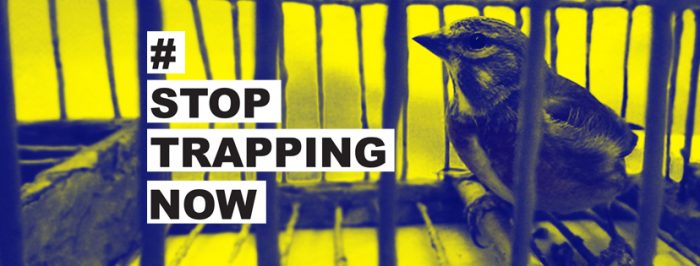 On 21st June 2018, the European Court of Justice (ECJ) delivered a judgement concluding that Malta was found guilty of infringing the European Birds Directive when it allowed finch trapping to reopen in 2014.
On 21st June 2018, the European Court of Justice (ECJ) delivered a judgement concluding that Malta was found guilty of infringing the European Birds Directive when it allowed finch trapping to reopen in 2014.
The ECJ clearly stated that by adopting a derogation allowing the trapping of seven species of wild finch, Malta has failed to fulfill its obligations under EU law. BirdLife Malta insisted that in the light of this judgement, the Government should never open the trapping season for finches again and should repeal the relevant framework law with immediate effect. You can read more here. Delivered by the European Court of Justice as the final stage of the infringement case initiated by the European Commission against Malta in 2015, the verdict follows the Opinion delivered in July 2017 by ECJ Advocate General Eleanor V. E. Sharpston in regard to the same Infringement Proceedings which on 24th September 2015 resulted in Malta being referred to the Court of Justice of the EU.
In preparation for this landmark ECJ judgement, in January 2018 BirdLife Malta had launched the campaign #STOPTRAPPINGNOW with the objective of explaining more about trapping to the general public and raising awareness about the several impacts of finch trapping on the birds, their habitat and the Maltese environment in general.

